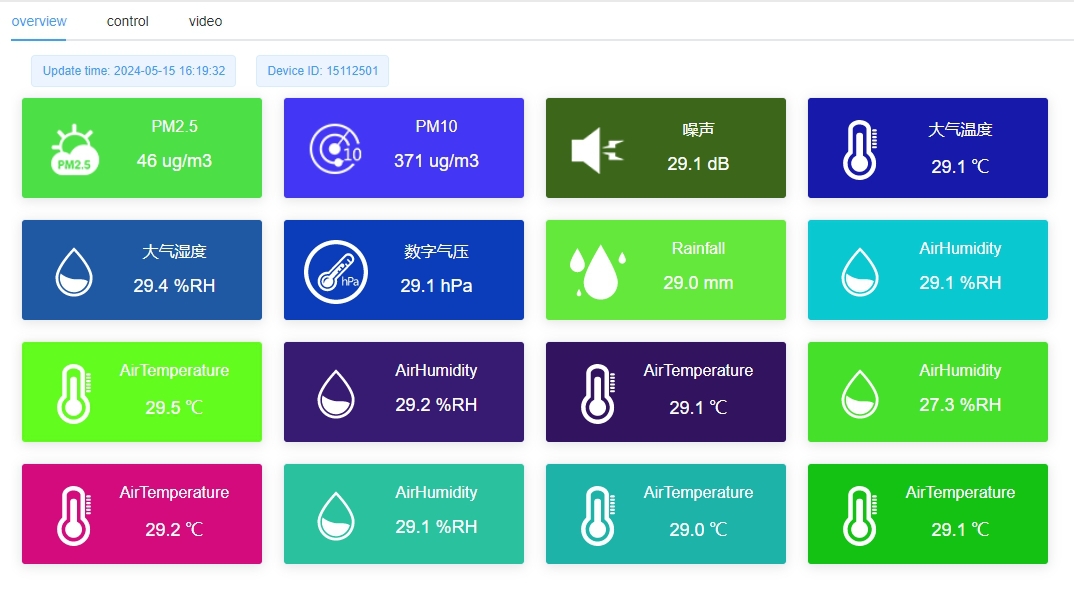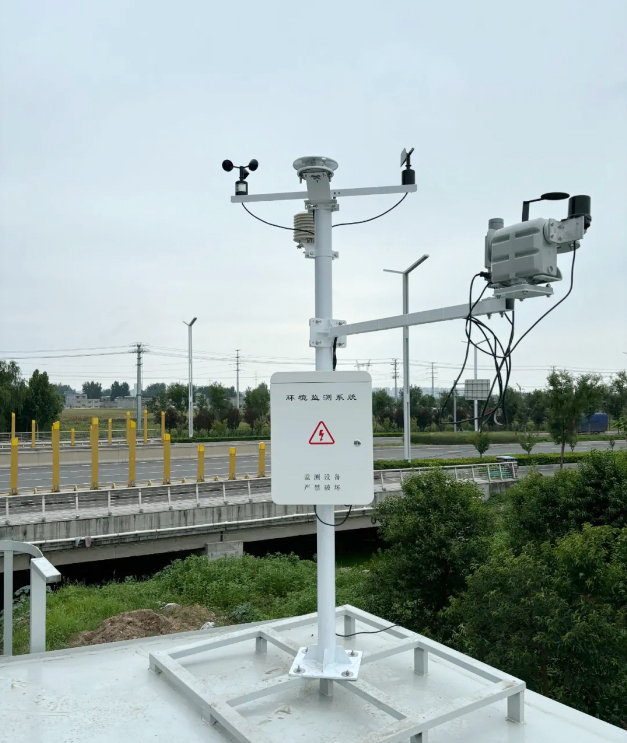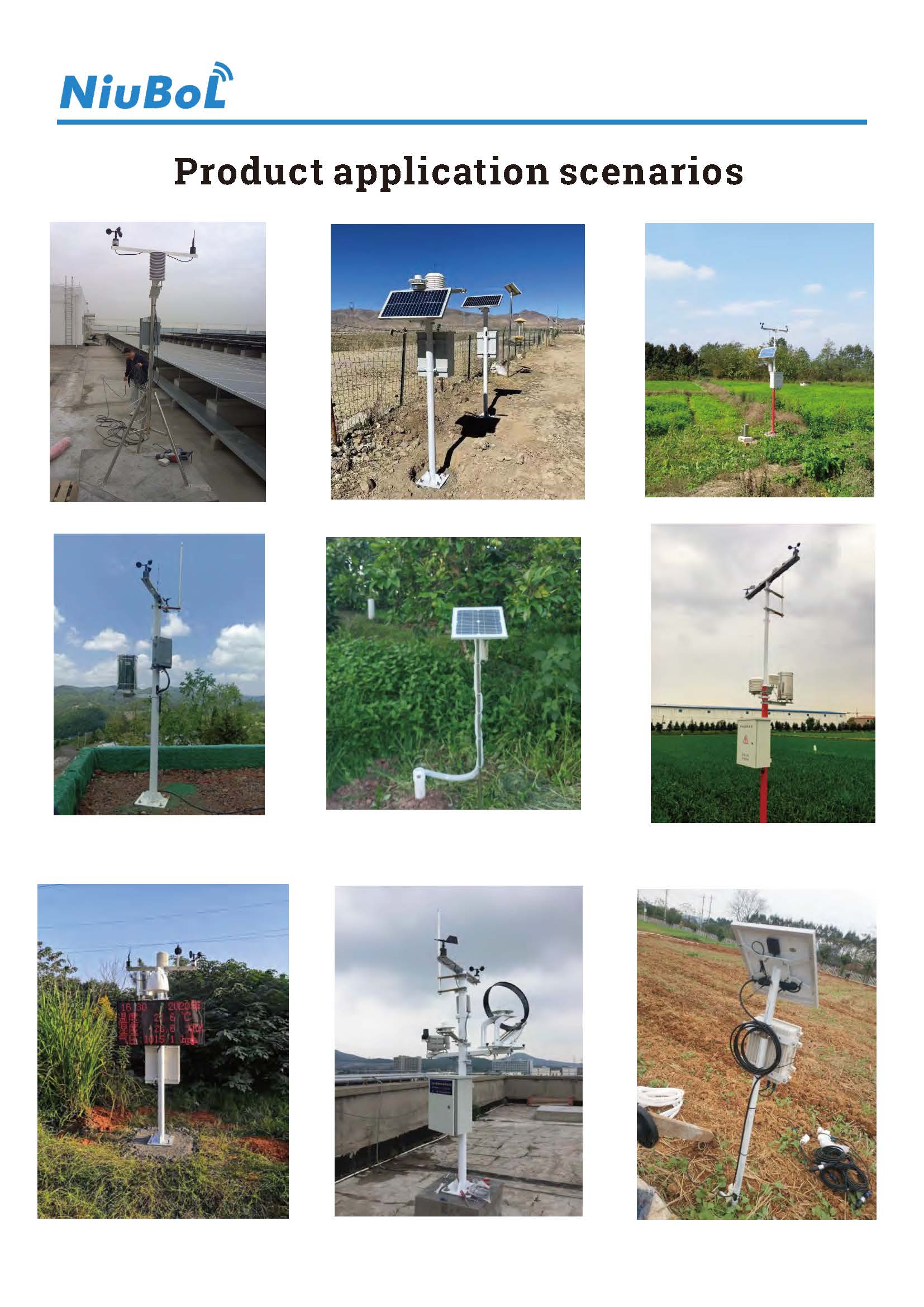

— Blogs —
—Products—
 Consumer hotline +8618073152920
Consumer hotline +8618073152920 WhatsApp:+8615367865107
Address:Room 102, District D, Houhu Industrial Park, Yuelu District, Changsha City, Hunan Province, China
Product knowledge
Time:2025-04-09 11:07:55 Popularity:37
In the field of meteorological monitoring, automatic weather stations have become indispensable tools due to their intelligence and efficiency. These unmanned devices can capture and record various meteorological parameters, such as temperature, humidity, wind speed, wind direction, air pressure, and rainfall, providing accurate data support for weather forecasting, agricultural management, forestry protection, and disaster early warning. This article will explore the functions, applications, and impacts of automatic weather stations in different fields.
An automatic weather station is a highly automated meteorological observation device that integrates multiple high-precision sensors and data processing systems. It can continuously monitor environmental changes without human intervention and transmit data to remote servers or user terminals via wireless communication technology. The main functions of an automatic weather station include:
Through sensors, the automatic weather station can record parameters like temperature, humidity, and wind speed every second or minute, ensuring the timeliness and continuity of the data. This capability is crucial for capturing rapidly changing weather patterns.

The built-in data processing unit analyzes and formats the raw data to generate easy-to-understand reports or graphs. Data can be stored locally or in the cloud, facilitating long-term analysis and review.
Using technologies such as 4G, 5G, satellite communication, or other wireless technologies, data can be instantly uploaded to remote platforms, allowing users to access it at any time via computers or mobile phones. This remote access feature significantly enhances the data’s availability.
Automatic weather stations are usually equipped with metal supports and protective casings made of corrosion-resistant materials, ensuring stable operation in extreme weather conditions (such as heavy rain, high temperatures, or strong winds) and long-term reliability.
These functions make automatic weather stations an ideal choice for modern meteorological monitoring, widely used in agriculture, forestry, aviation, and environmental monitoring.

In agriculture, automatic weather stations provide farmers with powerful tools for scientific management:
By monitoring temperature, humidity, and rainfall in the fields, farmers can adjust irrigation and fertilization schedules according to crop needs. For instance, data can indicate when to increase water usage during dry weather or avoid over-irrigation during wet conditions. This precise management improves crop yields and reduces resource waste.
Automatic weather stations can detect abnormal weather conditions, such as heavy rain or strong winds, in advance and provide early warnings to farmers. For example, when strong rainfall is detected, farmers can reinforce structures or adjust drainage systems to minimize losses.
The combination of humidity data and temperature changes helps predict the peak periods for pests and diseases. For instance, high humidity and warm weather can lead to fungal diseases, and farmers can take preventive measures, such as spraying pesticides, in advance based on the data.
Through these applications, automatic weather stations help agriculture achieve higher efficiency and sustainability, ensuring food security.
Forestry management relies heavily on meteorological conditions, and automatic weather stations play a key role in this field:
By continuously recording temperature, humidity, and rainfall data, forestry departments can assess the health of forests. For example, sustained high temperatures and low humidity may indicate drought risks, affecting tree growth, and this information can guide irrigation or reforestation plans.
Wind speed, wind direction, and humidity are crucial indicators for predicting fire risks. Automatic weather stations provide real-time data that helps managers identify high-risk periods for fires, allowing them to deploy firefighting resources when necessary. For example, during dry and windy weather conditions, patrols can be increased, or firebreaks can be set up in advance.
In areas prone to floods or frost, the early warning function of weather stations gives forestry protection time to act. For instance, when heavy rainfall is detected, measures can be taken to protect saplings or low-lying forest areas to minimize waterlogging damage.
The application of automatic weather stations has enhanced the scientific management of forestry and provided technological support for the long-term stability of ecosystems.

In fields, weather stations monitor wind speed and humidity to help farmers optimize planting and irrigation. For example, in orchards, data can guide the best timing for pesticide application, preventing waste when winds are strong.
These devices can track air quality and hydrological changes, providing data for environmental protection agencies. For example, when deployed near rivers, they can monitor the impact of rainfall on water levels and assist with flood warnings.
At small airports, automatic weather stations provide information on wind speed and air pressure to ensure safe takeoffs and landings. Their portability makes them easy to deploy at temporary runways or in remote areas.
Schools and research institutions use the data for meteorological experiments or teaching. For instance, students can analyze wind direction changes to learn about weather patterns, while researchers can explore microclimate characteristics.
Automatic weather stations have significant advantages in design and technology:
- Efficiency: Unmanned operation and real-time transmission reduce human intervention and improve monitoring efficiency.
- Reliability: Durable materials and protective designs ensure the devices operate reliably in harsh environments over long periods.
- Flexibility: Sensors can be configured according to needs, adapting to different application scenarios.
Looking ahead, with the integration of the Internet of Things (IoT), big data, and artificial intelligence, automatic weather stations will experience further development. For example, AI algorithms can predict weather trends based on historical data, optimizing agricultural or disaster response decisions; IoT technologies could network multiple weather stations, forming a more extensive monitoring system. These advancements will further enhance the value of automatic weather stations in meteorological services and interdisciplinary research.

Automatic weather stations, with their ability to capture and record data in real time and accurately, have revolutionized the way meteorological monitoring is conducted. From increasing agricultural productivity to protecting forestry, ensuring aviation safety, and monitoring the environment, they provide efficient and reliable data support for various industries. For international clients, this technology is not only a tool to improve efficiency but also a critical solution for addressing climate change and natural disasters. As technology continues to evolve, automatic weather stations will play a larger role globally, driving technological progress and contributing to sustainable social development.
Prev:How Automatic Weather Stations Enhance Meteorological Monitoring Efficiency
Next:Photovoltaic Weather Station: A Key Tool for Improving Solar Power Generation Efficiency
Related recommendations
Sensors & Weather Stations Catalog
Agriculture Sensors and Weather Stations Catalog-NiuBoL.pdf
Weather Stations Catalog-NiuBoL.pdf
Related products
 Combined air temperature and relative humidity sensor
Combined air temperature and relative humidity sensor Soil Moisture Temperature sensor for irrigation
Soil Moisture Temperature sensor for irrigation Soil pH sensor RS485 soil Testing instrument soil ph meter for agriculture
Soil pH sensor RS485 soil Testing instrument soil ph meter for agriculture Wind Speed sensor Output Modbus/RS485/Analog/0-5V/4-20mA
Wind Speed sensor Output Modbus/RS485/Analog/0-5V/4-20mA Tipping bucket rain gauge for weather monitoring auto rainfall sensor RS485/Outdoor/stainless steel
Tipping bucket rain gauge for weather monitoring auto rainfall sensor RS485/Outdoor/stainless steel Pyranometer Solar Radiation Sensor 4-20mA/RS485
Pyranometer Solar Radiation Sensor 4-20mA/RS485
Screenshot, WhatsApp to identify the QR code
WhatsApp number:+8615367865107
(Click on WhatsApp to copy and add friends)